Why Are Engineered Below-the-Hook Devices Better than Homemade Devices?
You may have dependable engineers on staff who are capable of making an in-house below-the-hook lifting device. However, doing so is a bad idea because those devices will not be in compliance with OSHA standards, and if they fail, the risk does not outweigh the reward.
“Why would I waste time and money ordering a custom-engineered below-the-hook lifting device when I have an in-house engineer who could design and create one?”
We often hear this question, and it is one worth answering, as it could mean the difference between going home unharmed at the end of your shift or being seriously injured / killed should a homemade below-the-hook (BTH) lifting device fail during a lift.
While in-house engineers may have the mechanical skills and knowledge to make a device, they may not be familiar with the latest design standards, or have access to proof-testing equipment to make sure all design factors were considered.
By having an in-house engineer design and manufacture a below-the-hook lifting device, you and your company are assuming the risk, should it fail. Also, you could be exposing your employees to greater risk of injury / death should an incident happen during a lift made with that device.
The American Society of Mechanical Engineers (ASME) sets standards for design, engineering, manufacturing, proof-testing, and inspecting below-the-hook devices. The Occupational Safety and Health Administration (OSHA) is tasked with investigating workplace incidents should below-the-hook lifting devices fail while in use.
In this article, we’ll answer the following questions:
- What are the ASME requirements for a below-the-hook lifting device?
- Why isn’t it a good idea to create your own below-the-hook lifting device?
- What are the consequences of having an accident while using a homemade BTH lifting device?
- Can a homemade below-the-hook lifting device become certified?
What Are the ASME Requirements for a Below-the-Hook Lifting Device?
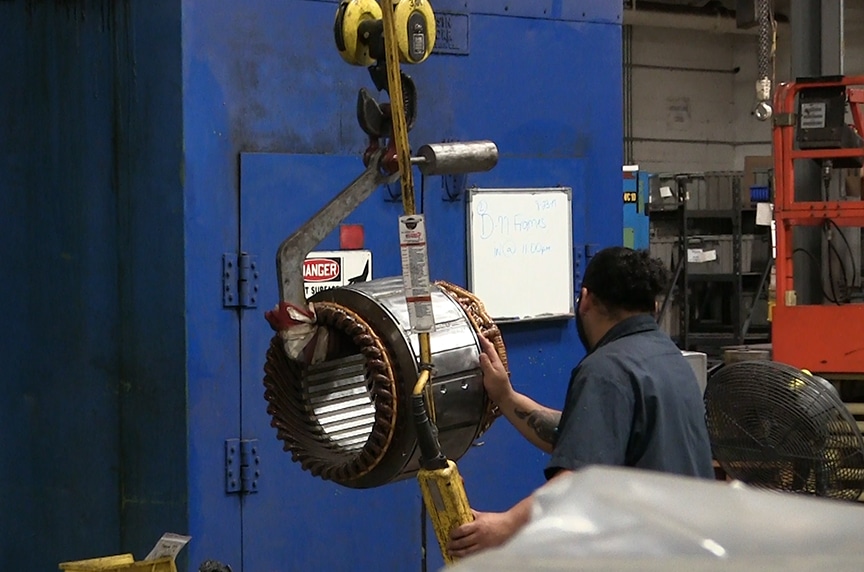
There are two standards that below-the-hook lifting devices must follow when being designed:
- ASME B30.20 Below-the-Hook Lifting Devices
- ASME BTH-1 Design of Below-the-Hook Lifting Devices
ASME B30.20 Below-the-Hook Lifting Devices discusses the tagging requirements, load testing, inspections, and what needs to be on each lifter for it to be considered compliant.
ASME BTH-1 Design of Below-the-Hook Lifting Devices digs deeper and talks more on the engineering side with safety factors, design categories, and service classes. It gets into the “nitty-gritty” details of what a below-the-hook lifting device needs to meet the standards from the engineering standpoint.
Why Do Some Companies Want to Create Their Own BTH Lifting Devices?
Some of the companies that have been making their own lifting devices for years feel their internal people have the best understanding of their practices and applications. Also, they may feel it unnecessary to bring in an outside company that may not be up to speed with their:
- Processes for lifting
- Objects being lifted
We often see companies who fabricate BTH devices make the adjustments they see fit, and come up with a device that works for them, instead of one that is in compliance with ASME standards.
What happens often with newer processes is the customer does not want to invest money when they’re trying to prove out a new process for their company, or they are moving something new and have yet to figure out their lifting process. Once they prove out that homemade lifting device, they have a piece that has been in use to lift an object, and everybody is comfortable with it. Many times, they just continue with it, not fully understanding what is needed to go into the device they manufactured.
By using homemade below-the-hook lifting devices, companies are assuming the risks should the device fail. For workers, the main concern would be health and safety, which could be put at unnecessary risk should a homemade device fail.
If an injury or death occurs, the company would be liable for the outstanding medical bills, could be involved in future legal action, and will be the subject of an OSHA investigation. Additionally, companies could be cited for violations of safety standards.
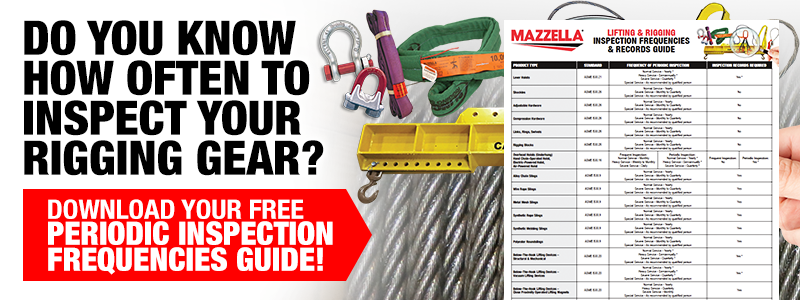
Why Isn’t It A Great Idea to Create Your Own Below-the-Hook Lifting Device?
Safety is the most important reason and should be considered before making any overhead lifts—a failure with a homemade below-the-hook lifting device could cause harm or death to an individual.
Also, liability is a reason why you should not create your own below-the-hook lifting devices. A company that designs and builds their own BTH devices takes on full responsibility of that lifter. If an incident were to happen, and OSHA comes to investigate, they’re looking for all of the background information, including engineering drawings, formulas used to create the device, and material certifications. If a company is making their own lifting devices, and they do not have documentation and / or records, they could find themselves in legal trouble.
If a company is having one of their engineers design its own BTH devices, and that engineer does not fully understand ASME standards, not only would that company find themselves potentially facing legal ramifications, but that engineer personally could face repercussions.
To properly manufacture a below-the-hook lifting device, third-party companies have engineers and designers who:
- Fully understand all of the applicable standards
- Know what the engineering needs are
- Have proper insurance and coverage
When customers design their own devices, it’s oftentimes the smaller aspects that are overlooked. While the device still may meet the design standards, the lifespan and longevity could come into question. If you need a below-the-hook lifting device, it is best to seek out professionals that deal with their manufacturing on a daily basis.
What Are the Consequences of Having an Accident While Using a Homemade BTH Lifting Device?
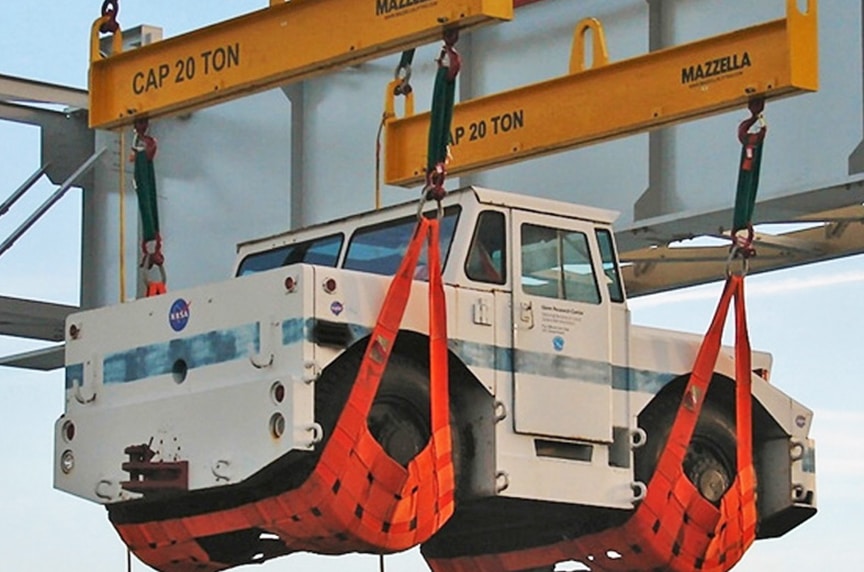
When a recordable accident happens, OSHA will conduct an on-site investigation. OSHA inspectors will dive deep into everything about the BTH lifting device to make sure it meets the requirements of the standards.
OSHA will check to see if your BTH lifting devices have all the proper markings listed in the ASME B30.20 Below-the-Hook Lifting Devices standard. When companies do not have the proper markings on their lifting devices, or are in violation of other parts of the standard, fines will be levied.
In addition to the fines OSHA will levy, companies who make their own BTH lifting devices could face legal ramifications from either the individual that was injured, or a contractor from a different company who seeks damages. If an engineer did some drawings or fabricated an in-house below-the-hook lifting device, it will put everybody in a completely avoidable, yet high-risk situation.
Can a Homemade Below-the-Hook Lifting Device Become Certified?
While companies have engineers who can design and build in-house below-the-hook lifting devices to ASME standards, Mazzella cannot and does not certify anything that a customer manufactures themselves. Our certification is our company’s stamp saying that “we’ve designed, engineered, and fabricated this device to meet or exceed all ASME standards.”
For a third-party manufacturer to certify a homemade device, they would need to review all of the engineering. That review includes all of the materials and material certifications used in the device. They would have to review the weld procedures used in putting the device together, as well as the welder who actually welded it and their certifications.
Then, a full visual inspection on the device would be needed to make sure everything is in proper working order. Inspectors would look for:
- Failed welds
- Deformed pieces
- Any other design flaws
There are information requirements for below-the-hook devices, and what is often confused is the difference between certification and tagging. Your devices need to be tagged and brought up to the ASME B30.20 Below-the-Hook Lifting Devices standard. Many times, that can only happen by rebuilding the device with proper engineering and fabrication behind it.
Can a Homemade Lifting Device Be Repaired?
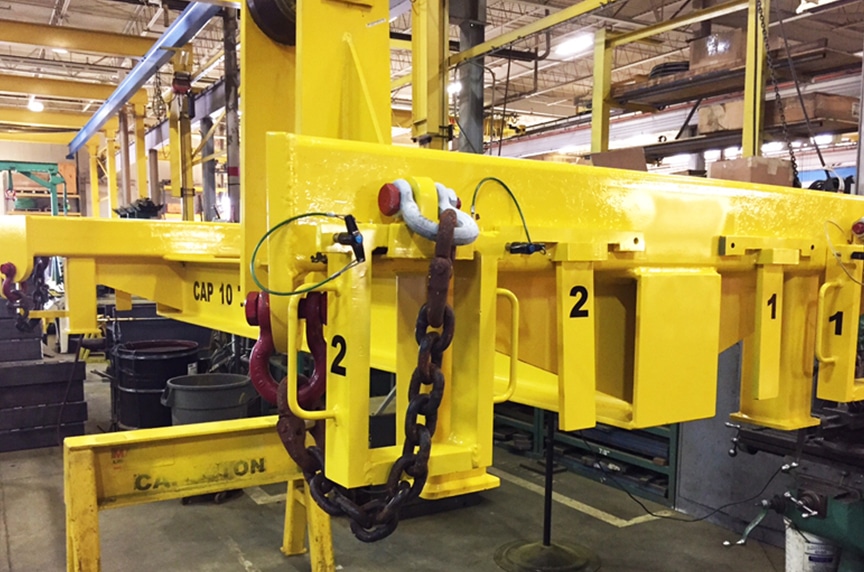
Operations managers who need repairs on a homemade lifting device will find it difficult to get a third-party company willing to repair or alter a lifting device that is not been manufactured by one of the main below-the-hook fabricators.
Companies are hesitant to conduct these repairs because they are taking full liability over that device. For somebody to be willing to take over the liability on that device, they need to be certain the BTH device was originally designed to meet or exceed all ASME standards.
What we’ve found is that homemade below-the-hook lifting devices often have one or two criteria that don’t make them fully compliant with ASME standards. Taking on that liability is not in the best interest of third-party companies, and we would recommend a full replacement of that BTH device.
For customers who have made and used their own devices for years, our goal is not to come in and shut down your operations. Our goal is to point out where we feel the critical pieces are that need immediate attention. It will be our recommendation that you do start pulling these devices out of service because they are not ASME-compliant. We are not coming in to tell you, “You have to stop using that,” but we are informing you, “Hey, these devices do not meet ASME standards. Here are the consequences you might encounter if you continue to use these devices.”
We understand replacing an entire factory of lifting devices has a cost the company may not be ready to bear. However, you can start making progress toward replacing those devices that are out of compliance. As long as you are taking steps to correct what’s wrong in your facility, OSHA may give you a grace period. Despite any “grace period,” you should replace those homemade devices with properly engineered ones as soon as possible.
What Is Included in a Mazzella BTH Inspection?
Our inspection team will walk through a facility to look at devices in use, and the standards are very clear for what passes or fails. If a device fails, inspectors will give reasons why they fail it. A lot of times, a device failed because it is missing any type of identification or tagging information on it.
Inspectors are going strictly off of the standards, and they will ask, “Does this meet the standards? Yes or no?” If you have our inspection team in and something fails, we highly recommend you bring in our engineered products group to help you dig deeper into:
- Why the device failed?
- What needs to be done?
- Is it an immediate danger?
We will document that information for you. It is in your best interest, as well as the employees using it, to get safer lifting practices in place, even if it’s a temporary practice that might change some of your operations.
How Can Mazzella Help With Your Below-The-Hook Lifting Devices?
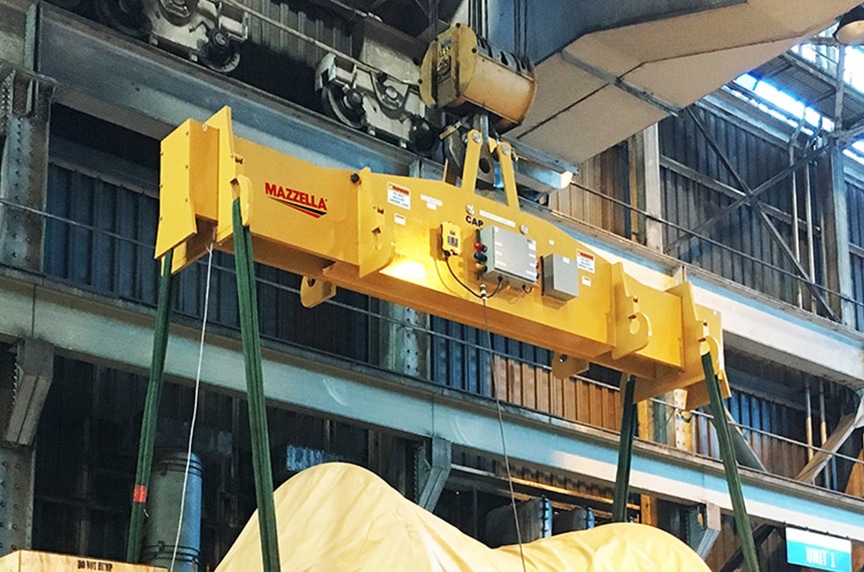
Mazzella has more than 65 years of experience in designing and developing custom engineered products, below-the-hook lifting devices, and lifting attachments for use with all types of cranes. On-staff engineers and our commitment to ISO 9001: 2015 guide us to continued success in manufacturing quality products and processes.
Mazzella understands the ASME standards for below-the-hook lifting devices, with an engineer who sits on the ASME B30.20 sub-committee. Also, we have the appropriate insurance coverage to provide you with a device that is certified and backed by the standards. Mazzella lifting devices will meet every OSHA requirement and ASME standard.
We can design and fabricate all types of below-the-hook lifting solutions for any application—all of our work is done in compliance with ASME B30.20 Below-the-Hook Lifting Devices and ASME BTH-1 Design of Below-the-Hook Lifting Devices standards. Our products range from a common lift beam to an engineered special 150 lb. engine line lifter, and 330-ton electric furnace lifter.
Along with design and fabrication, we provide repair or recertification of below-the-hook lifting devices.
Click here if you need a repair or recertification of your lifting device.
Call us at 800.362.4601 or click here to specify your next below-the-hook project!
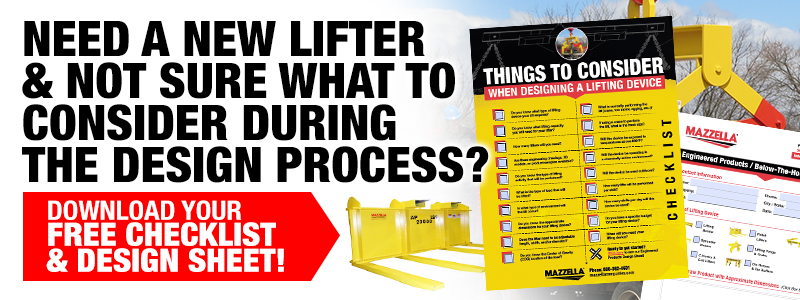

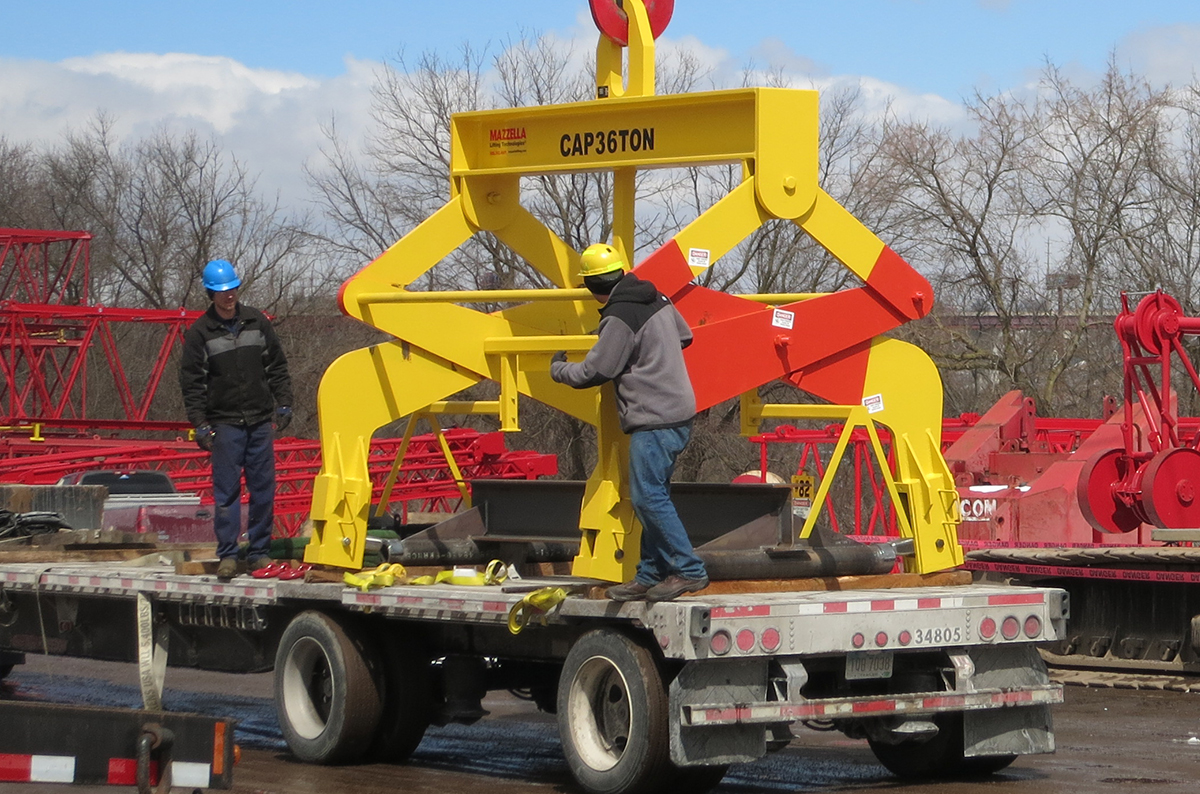
Below-the-Hook Lifting Devices
We can design and fabricate all types of below-the-hook lifting solutions for any application—all of our work is done in compliance with ASME B30.20 and ASME BTH-1 standards. Our products range from a common lift beam, to an engineered special 150 lb. engine line lifter, to a 330-ton electric furnace lifter.
Copyright 2022. Mazzella Companies.
